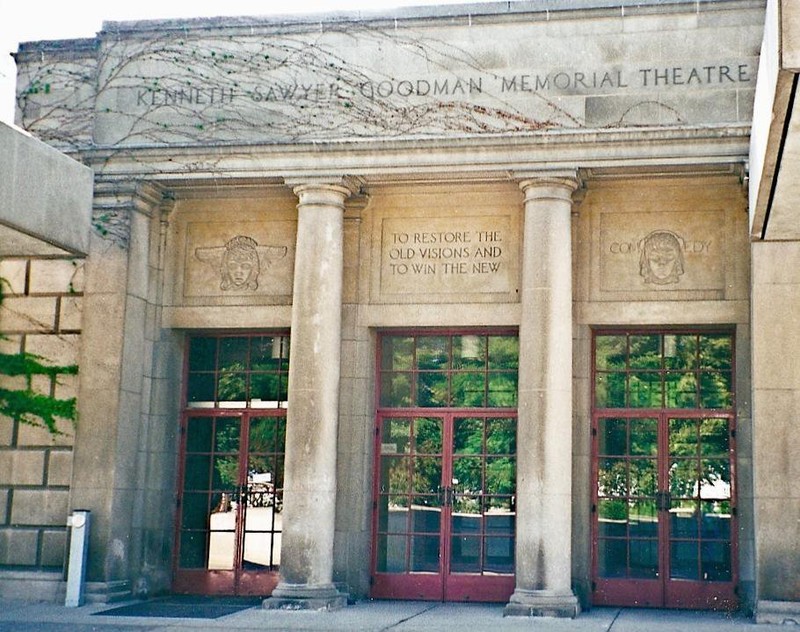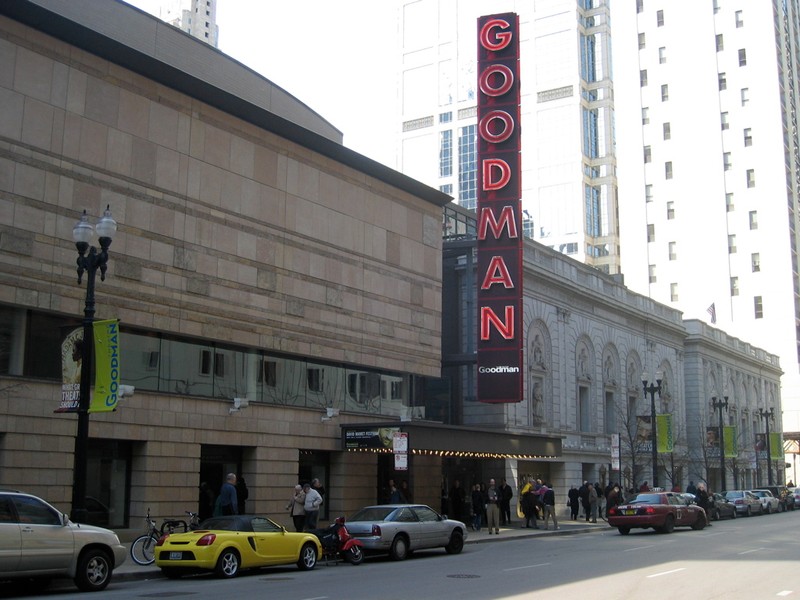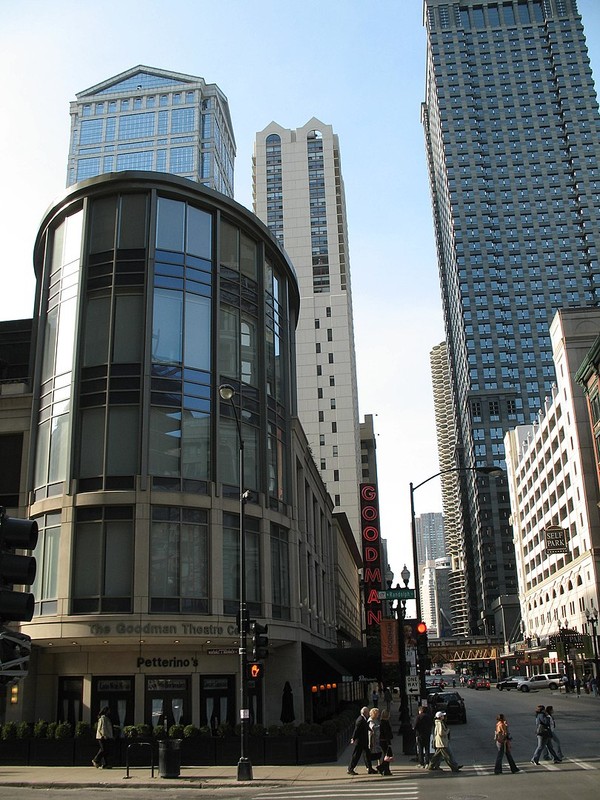Goodman Theatre
Introduction
Text-to-speech Audio
Images
Original Goodman Theatre located in the rear of the Art Institute of Chicago (1925 - 2000)

The Goodman Theatre, Chicago, Illinois. Photographed 6 April 2006. © Jeremy Atherton, 2006.

Goodman Theatre Center

Backstory and Context
Text-to-speech Audio
Chicago's oldest and largest not-for-profit theater opened in 1925, three years after the parents of Kenneth Sawyer Goodman, a Chicago playwright who died of the "Spanish Flu" while serving in World War I, sent a letter to the Art Institute trustees that proposed a theater at the rear of the museum as a memorial to their son. The theater group remained connected to the Art Institute until 2000 when it moved to Chicago's theater district in the heart of downtown Chicago. The Goodman Theatre has received a Tony Award for Outstanding Regional Theatre.
The Goodman Theatre opened during a decade when live shows gave way to films; movie attendance soared. By the mid-1920s, fifty million people a week went to the movies (the equivalent of half the nation's population). By 1929, in Chicago, theaters offered enough seats to accommodate half the city's population to attend a movie every day. Nonetheless, live theater -- plays and music performances -- did not vanish, and the Goodman catered to those still seeking to view live theater. Often, productions reflected a society that undergone profound change as a result of World War I; plays routinely reflected a culture less sure about its future than was before the war. The earliest productions at the Goodman drew audiences of all types, from the affluent to the art devotees.
The founding director Thomas Wood Stevens departed five years into the theater's existence in 1930, resulting in the professional company dissolving. Still, the school of drama Stevens had established in 1922 survived, and student productions took over the Goodman stage during the Great Depression and lasting into the 1950s. Professional actors did not return until 1957 when John Reich, a Viennese teacher and director, took over the Goodman and brought professional actors back to the theater. For twelve years, Reich directed productions that comprised of professional and student actors. But, in 1969, under his leadership, the Goodman opened the season with the first entirely professional acting company at the theater since its first five years of existence. In the late 1970s, having parted from the school (which had moved to DePaul University) and the Art Institute, the Goodman formed an independent board: Chicago Theatre Group. Although debts mounted during the late twentieth century as a result of hiring professional actors, the theatre avoided the plight of many 1920s theater houses by not only surviving but remaining relevant. In 1998, the landmark revival of Arthur Miller's Death of a Salesman enhanced the theater's popularity allowing it to move into a new structure. Thus, in 2000, the company moved into its current building at 170 N. Dearborn in Chicago's famed theater district. Meanwhile, the original Goodman School of Drama lives on through the DePaul University School of Drama, and enjoys a connection to the Goodman.
Sources
Christiansen, Richard. "Goodman Theatre." The Electronic Encyclopedia of Chicago. Chicago Historical Society. Accessed August 3, 2020. http://www.encyclopedia.chicagohistory.org/pages/528.html
"Goodman Memorial Theatre." Bulletin of the Art Institute of Chicago (1907-1951) 38, no. 6 (1944): 101. Accessed August 3, 2020. www.jstor.org/stable/4112503.
"History: The story of The Theatre School is as multi-faceted as any we’ve ever told onstage." The Theatre School at Depaul University. depaul.edu. Accessed August 3, 2020. https://theatre.depaul.edu/about/history/Pages/default.aspx
Medgyesy, Laura Louise. "Chicago's Goodman Theatre: the Transition from a Division of the Art Institute to an Independent Regional Theatre." PhD diss., American University. 1981
"Our History." The Goodman Theatre. goodmantheatre.org. Accessed August 3, 2020. https://www.goodmantheatre.org/About/Our-History/.
https://twitter.com/chi_geek/status/1012447290026577920
By No machine-readable author provided. JeremyA assumed (based on copyright claims). - No machine-readable source provided. Own work assumed (based on copyright claims)., CC BY-SA 2.5, https://commons.wikimedia.org/w/index.php?curid=844148
By TonyTheTiger at English Wikipedia, CC BY-SA 3.0, https://commons.wikimedia.org/w/index.php?curid=10472347
